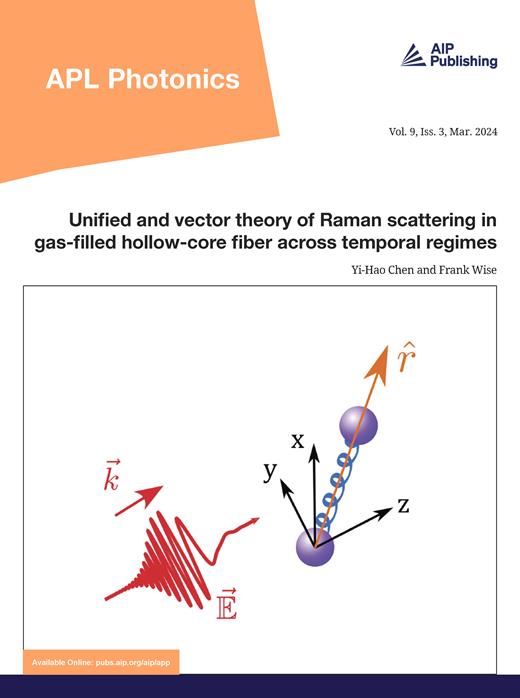A silicon photonics waveguide-coupled colloidal quantum dot photodiode sensitive beyond 1.6 µm
IF 5.3
1区 物理与天体物理
Q1 OPTICS
引用次数: 0
Abstract
Silicon photonics faces a persistent challenge in extending photodetection capabilities beyond the 1.6 µm wavelength range, primarily due to the lack of appropriate epitaxial materials. Colloidal quantum dots present a promising solution here, offering distinct advantages, such as infrared wavelength tunability, cost-effectiveness, and facile deposition. Their unique properties position them as a potential candidate for enabling photodetection in silicon photonics beyond the conventional telecom wavelength, thereby expanding the potential applications and capabilities within this domain. In this study, we have successfully integrated lead sulfide (PbS) colloidal quantum dot photodiodes (QDPDs) onto silicon waveguides using standard process techniques. The integrated photodiodes exhibit a remarkable responsivity of 1.3 A/W (with an external quantum efficiency of 74.8%) at a wavelength of 2.1 µm, a low dark current of only 106 nA, and a bandwidth of 1.1 MHz under a −3 V bias. To demonstrate the scalability of our integration approach, we have developed a compact 8-channel spectrometer incorporating an array of QDPDs. This achievement marks a significant step toward realizing a cost-effective photodetector solution for silicon photonics, particularly tailored for a wide range of sensing applications around the 2 µm wavelength range.灵敏度超过 1.6 µm 的硅光子波导耦合胶体量子点光电二极管
硅光子学在将光电探测能力扩展到 1.6 µm 波长范围之外方面一直面临挑战,这主要是由于缺乏合适的外延材料。胶体量子点是一种很有前景的解决方案,具有红外波长可调、成本效益高和易于沉积等显著优势。胶体量子点的独特性能使其成为硅光子学中实现传统电信波长以外光电探测的潜在候选材料,从而拓展了这一领域的潜在应用和能力。在这项研究中,我们利用标准工艺技术成功地将硫化铅(PbS)胶体量子点光电二极管(QDPD)集成到了硅波导上。集成的光电二极管在 2.1 µm 波长下的响应率高达 1.3 A/W(外部量子效率为 74.8%),暗电流低至 106 nA,在 -3 V 偏置下的带宽为 1.1 MHz。为了证明我们的集成方法的可扩展性,我们开发了一种集成了 QDPD 阵列的紧凑型 8 通道光谱仪。这一成果标志着我们在为硅光子学实现经济高效的光电探测器解决方案方面迈出了重要一步,尤其是为 2 µm 波长范围内的各种传感应用量身定制的光电探测器解决方案。
本文章由计算机程序翻译,如有差异,请以英文原文为准。
求助全文
约1分钟内获得全文
求助全文
来源期刊

APL Photonics
Physics and Astronomy-Atomic and Molecular Physics, and Optics
CiteScore
10.30
自引率
3.60%
发文量
107
审稿时长
19 weeks
期刊介绍:
APL Photonics is the new dedicated home for open access multidisciplinary research from and for the photonics community. The journal publishes fundamental and applied results that significantly advance the knowledge in photonics across physics, chemistry, biology and materials science.
 求助内容:
求助内容: 应助结果提醒方式:
应助结果提醒方式:


